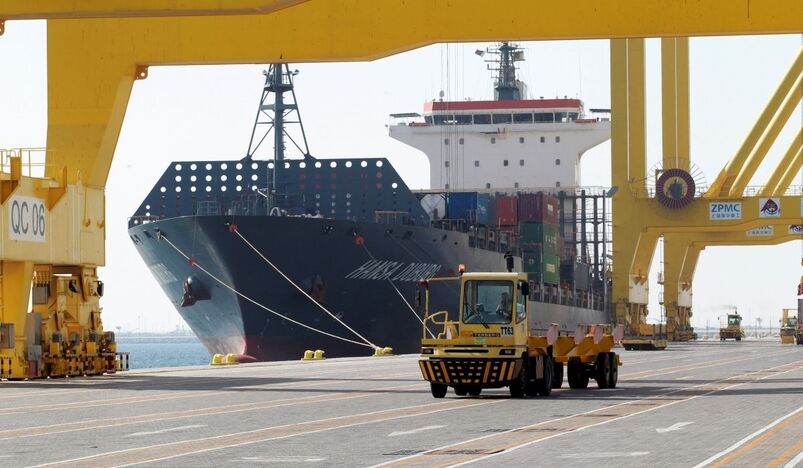
Hamad Port Milaha
Qatar's rise as a regional transshipment hub has been confirmed once more. Qatari ports reported an 11 percent increase in container transshipment volume in February 2022 compared to the previous month, indicating that the country is quickly becoming a regional trade hub, thanks in part to Hamad Port.
The increase in cargo volumes in Hamad, Ruwais, and Doha ports comes as the global maritime sector grapples with global supply-chain issues caused by the COVID-19 pandemic outbreak.
"Mwani Qatar's performance in February 2022 saw an increase of 11% in transshipment containers compared to the previous month." Mwani tweeted yesterday that the three ports handled over 113,000 twenty-foot equivalent units (TEUs) in February, as well as more than 125,000 tonnes of general cargo and up to 46600 tonnes of building materials.
Mwani reported that in February 2022, 113,957 TEUs, 125,341 tonnes of general cargo, 4992 RORO units, 16,900 livestock heads, and 46,635 tonnes of construction materials were handled at the country's three ports. 213 vessels were handled by Hamad Port, Ruwais Port, and Doha Port.
Separately, according to QTerminlas, in February 2022, Hamad Port handled 112,017 TEUs, 111,136 tonnes of breakbulk cargo, 4917 RORO units, and 10,000 tonnes of bulk cargo, with 106 vessels calling at the port in the previous month.
The strategic geographical location of Hamad Port allows for cargo movement to the upper Gulf, supporting countries like Kuwait and Iraq, as well as south to Oman. Hamad Port is being positioned as a transshipment hub for the upper Gulf and Oman, according to QTerminlas' website, in support of ongoing efforts to attract other shipping lines to the port.
Also last month, QTerminals started full-scale operations of the first and second phases of Hamad Port Container Terminal 2 (CT2).
With the completion of phases 1 and 2 of CT2, the port's total TEU capacity has increased to three million per year, and it is equipped with the most cutting-edge environmentally friendly and technologically advanced equipment to meet the needs and demands of global shipping lines. Furthermore, CT2 aims to increase Qatar's intra-regional trade as well as trade with other countries around the world, as well as improve the country's competitiveness by transforming it into a regional business hub.
Over 70% of the materials used in the construction of CT2's infrastructure were 'Made in Qatar' to the highest standards.
Source: Multiple News
.jpg)
Qatar Secures Place Among the World's Top 10 Wealthiest Nations
.jpg)
Hamad International Airport Witnesses Record Increase in Passenger Traffic

Saudi Arabia: Any visa holder can now perform Umrah

What are Qatar's Labour Laws on Annual Leave?
Leave a comment